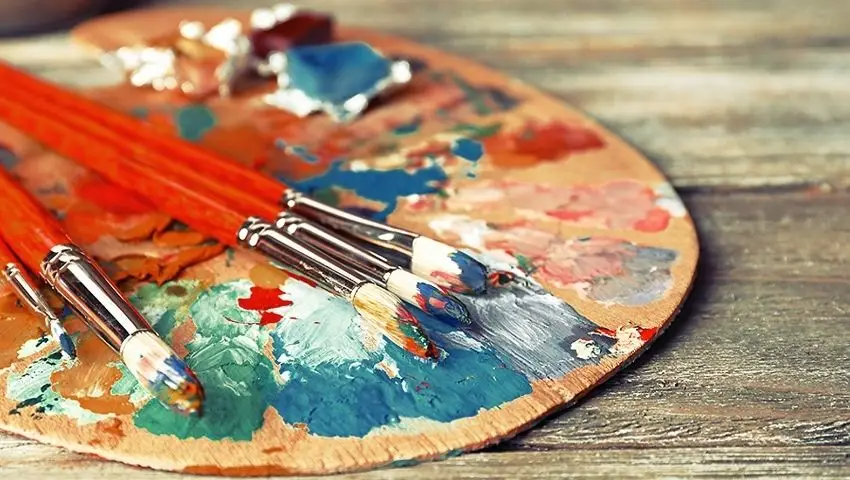Blue is a primary color that brings feelings of calm and evokes the gentle ocean and bright sky. It is a popular color and many aspiring painters want to know what colors make blue.
Blue can often be a motivational color too, due to its feelings of security and order.
Due to its prevalence in particular areas of nature, it’s no surprise that many people are naturally attracted to the appealing color of blue and want to know what colors make blue.
It is one of the most popular colors across cultures.
Searching out water, feeling the open sky, and other reasons are great for us.
It was one of the most often used colors in painting techniques.
Learning to mix blues with different temperatures, saturation levels, and brightnesses is key to mastering your skills.
So, follow these simple rules, and you’ll be well on your way.
You’ll learn what colors make blue, how to make different blue shades, and more.
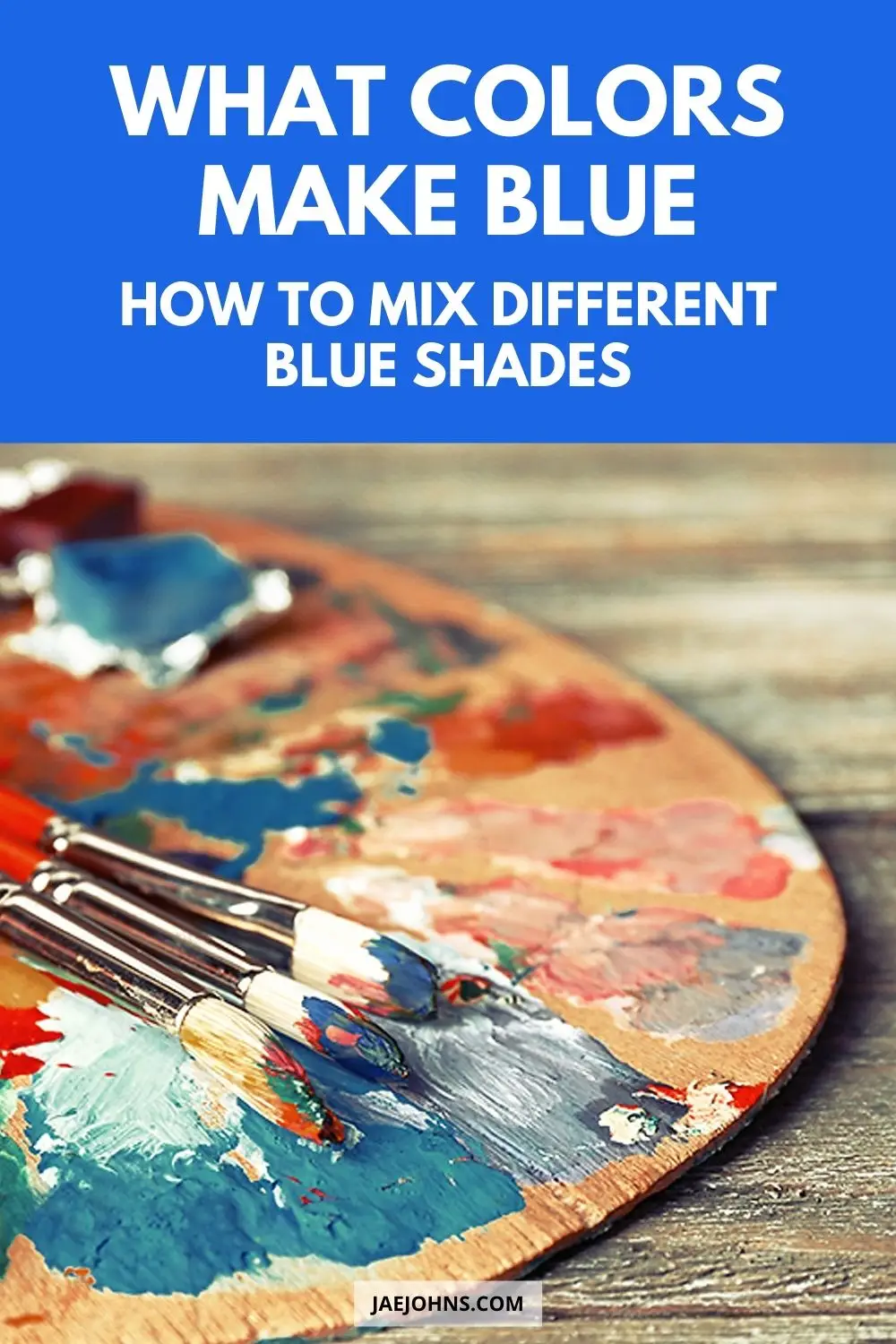
How to Make the Color Blue?

If you’re trying to discover what colors make blue in order to make pure blue, please note it is impossible to make pure blue through color mixing.
It’s a primary color.
You can mix blue with different colors to change the temperature and shade of the blue you are using.
This is an important skill, as knowing how to make different shades of blue is crucial to getting light and shadows right on the canvas.
Using the color wheel and some basic color theory, we’ll be able to learn how to make a variety of different blue hues.
However, knowing which colors to use for each shade takes color theory, so we’ll dive into that now.
Color Bias and the Color Wheel

Learning how to mix different shades of blue will be quite easy if you understand color bias.
Color bias is a theory that comes from what happens when you mix a color with other colors on the color wheel.
Paintings use these concepts from color theory to help blend the different colors and make sure the colors on the canvas work together when they devise their color palette.
The color wheel reveals the relationships between all the colors of the visible light spectrum.
Different color charts have different levels of depth, showing more or less secondary and tertiary colors.
Basic color wheel diagrams tend just to have primary and secondary colors.
Fundamental shades of color are called primary shades, which are foundational shades to the rest of the color wheel.
Mixing any two primary colors will make a secondary shade.
Likewise, a secondary and primary shade together will make a tertiary shade.
Thus, you can make different shades for the color blue by mixing in a bit of one of the other primary or secondary colors.
Putting just enough of these other colors without changing the color to something outside blue is called color bias.
Color bias towards red shades is a warm color bias, whereas color bias towards yellow and green is referred to as cool colors.
We’ll look at how mixing different colors with blue affects it using knowledge from the color wheel.
That way, you can see a model of color theory at work.
How to Mix Darker Shades of Blue
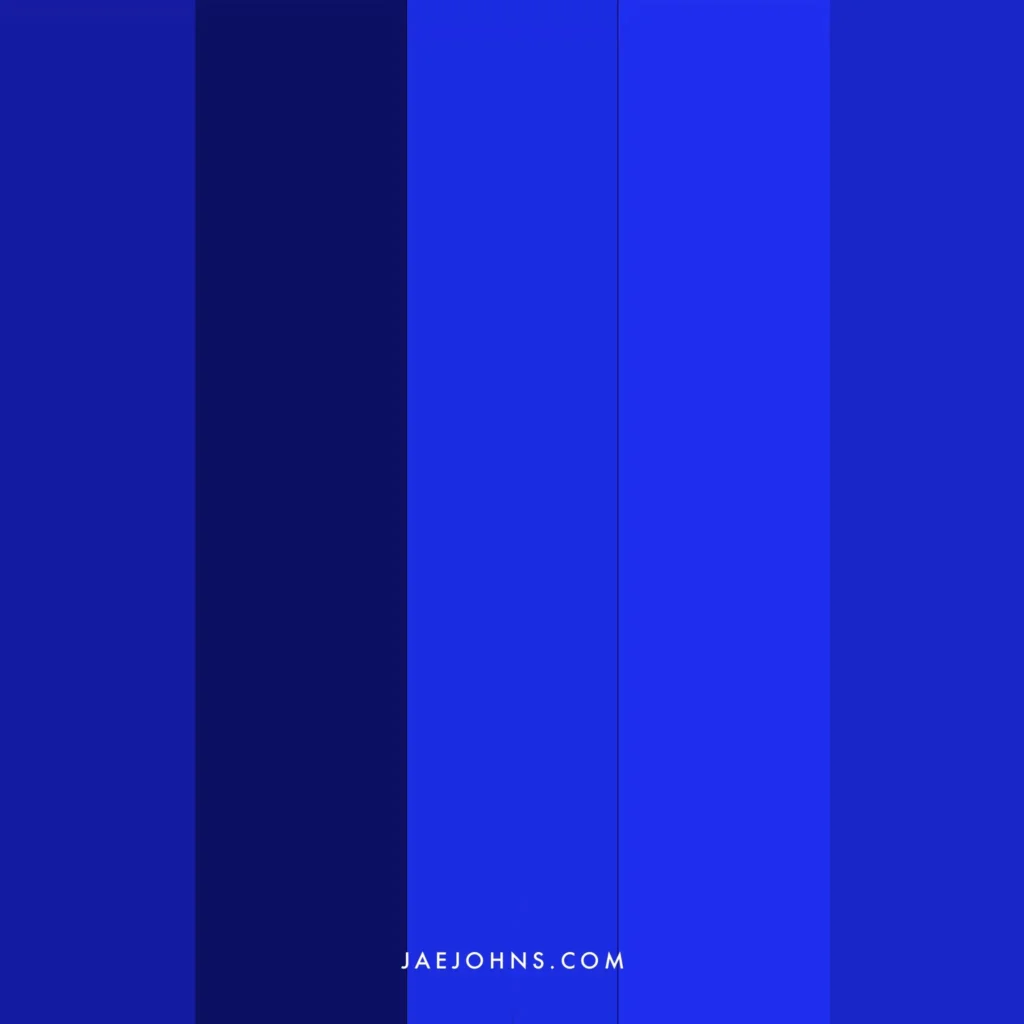
If you’re trying to discover what colors make dark blue, then you might not want to rely on adding black.
Darkening blue with black doesn’t always keep the integrity of the blue saturation of the pigment.
Most artists use a mixture of purples, greens, and reds to create a dark color with their blues while maintaining a high saturation of the blue itself.
Ultramarine Blue is a naturally dark shade of blue paint, so that’s often a good place to start.
If trying to find out how to make different blue shades, here are a few colors you can mix it with to get different darker shades of blues.
Dioxazine Purple
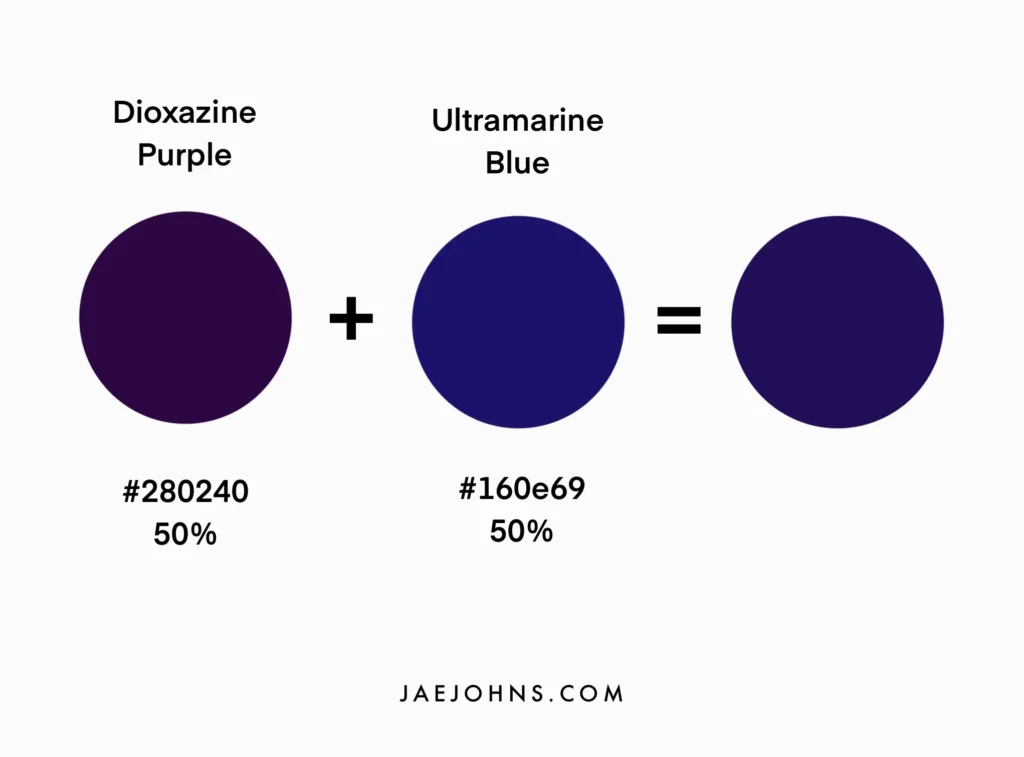
If you know what colors make dark blue then you can get some really great deep blue colors.
Dioxazine Purple is a great purple shade that creates a deep blue when mixed with Ultramarine Blue.
The purple shading adds a hint of red for a dark blue in the same way crimson is to red.
If combined with Cobalt Blue, it will make a more muted blue.
Pthalo Green
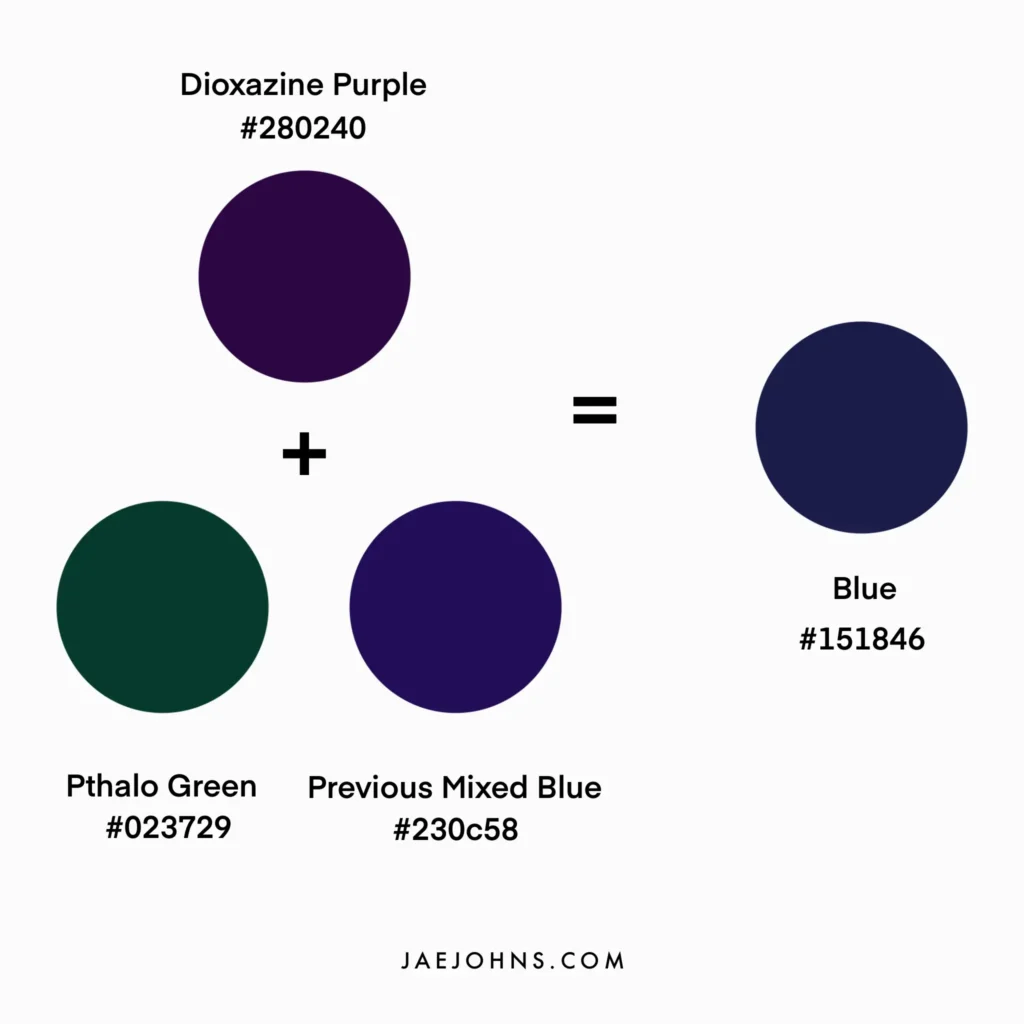
If you add Pthalo Green to the mixture of Dioxazine Purple and blue you already have, you’ll have a bit of each primary color, making for a more true blue, as it contains hints of both yellow and red through the purple and green.
Burnt Umber
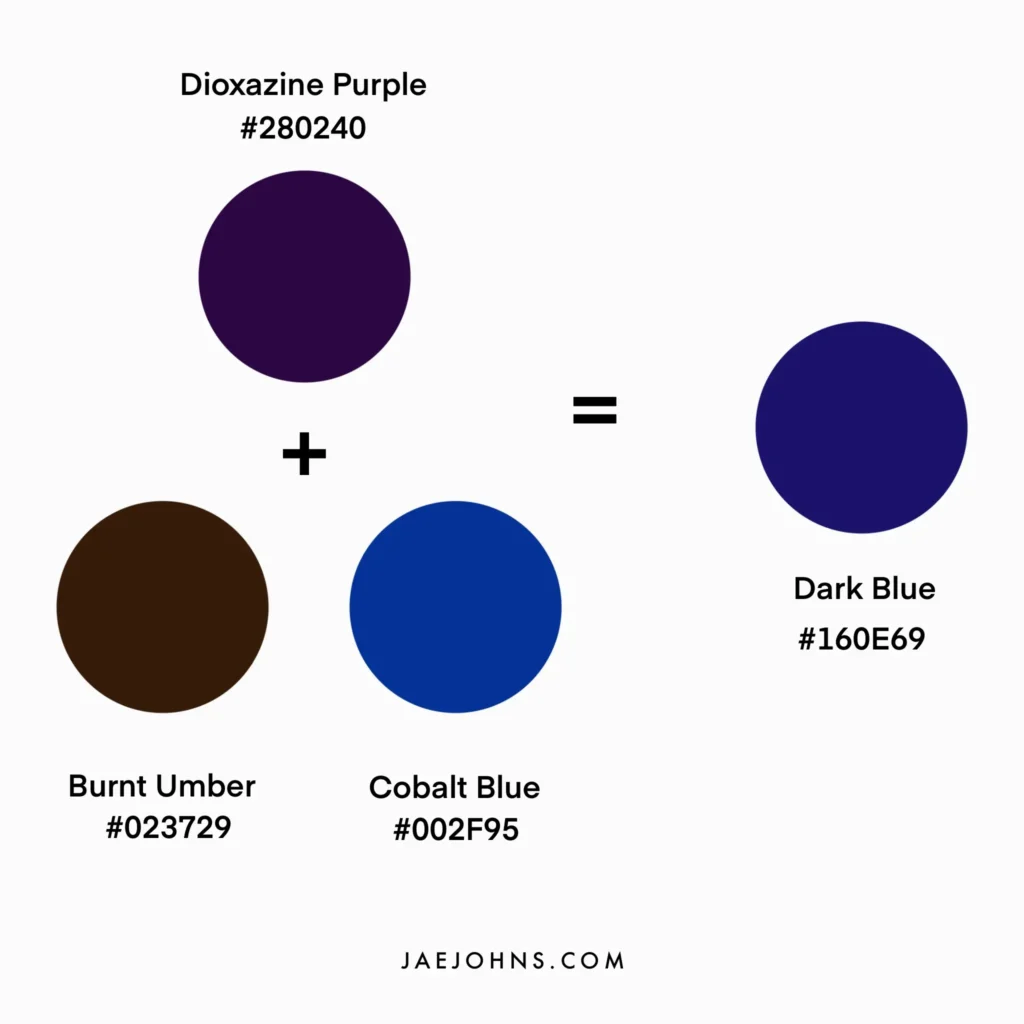
Discovering a ‘true’ dark blue can be difficult unless you know what colors make dark blue.
Another way to accomplish a more ‘true’ dark blue is to add Burnt Umber.
It makes for a more muted overall dark blue.
We’ll look at muted blues in a later section.
If you want a dark blue with less saturation, this is a good choice.
Pthalo Green and Alizarin Crimson
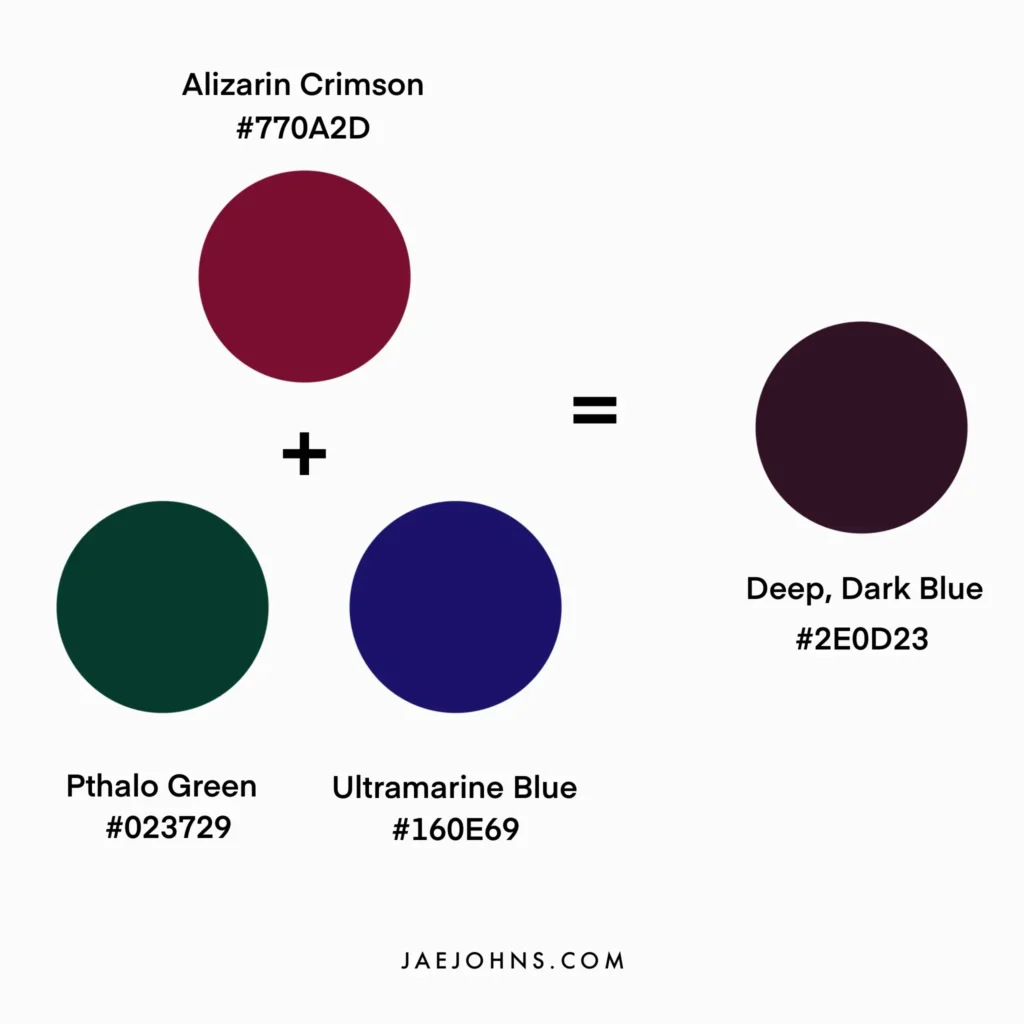
If you mix Pthalo Green and Alizarin Crimson it will make a deep, almost true black color.
Thus, adding this to Ultramarine Blue will make for a deep, dark blue color. It’s one of the darkest blues one can make.
How to Mix Lighter Shades of Blue
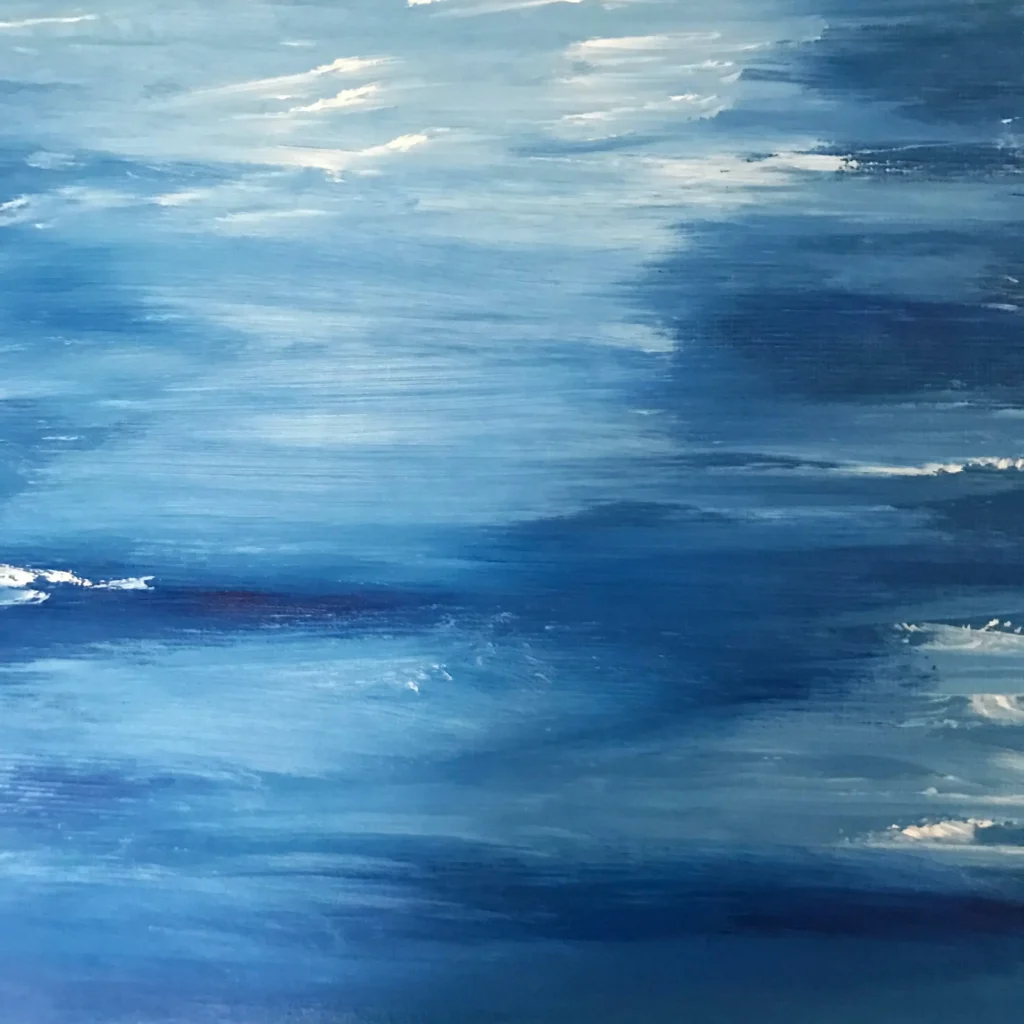
Trying to figure out how to make different blue shades can often lead to you wanting to make lighter shades of blue.
In the case of lightening the color blue, often simply adding white is the best way to do it.
It’ll work to lighten both Ultramarine and Cobalt Blue without losing the sense of blue saturation.
However, the more white you add, the more muted the blue will become.
There are some ways around this.
With Ultramarine Blue and cornflower blue, you’ll get a very vibrant light shade when you mix in white.
You’ll also notice the warm undertones of Ultramarine Blue much better.
Just a little white will go a long way, so start with a small amount at first.
In the opposite vein, lightening Cobalt Blue with white will show you how cool Cobalt Blue is.
Adding white will tend to make Cobalt Blue appear much brighter.
Adding Yellow and Light Green
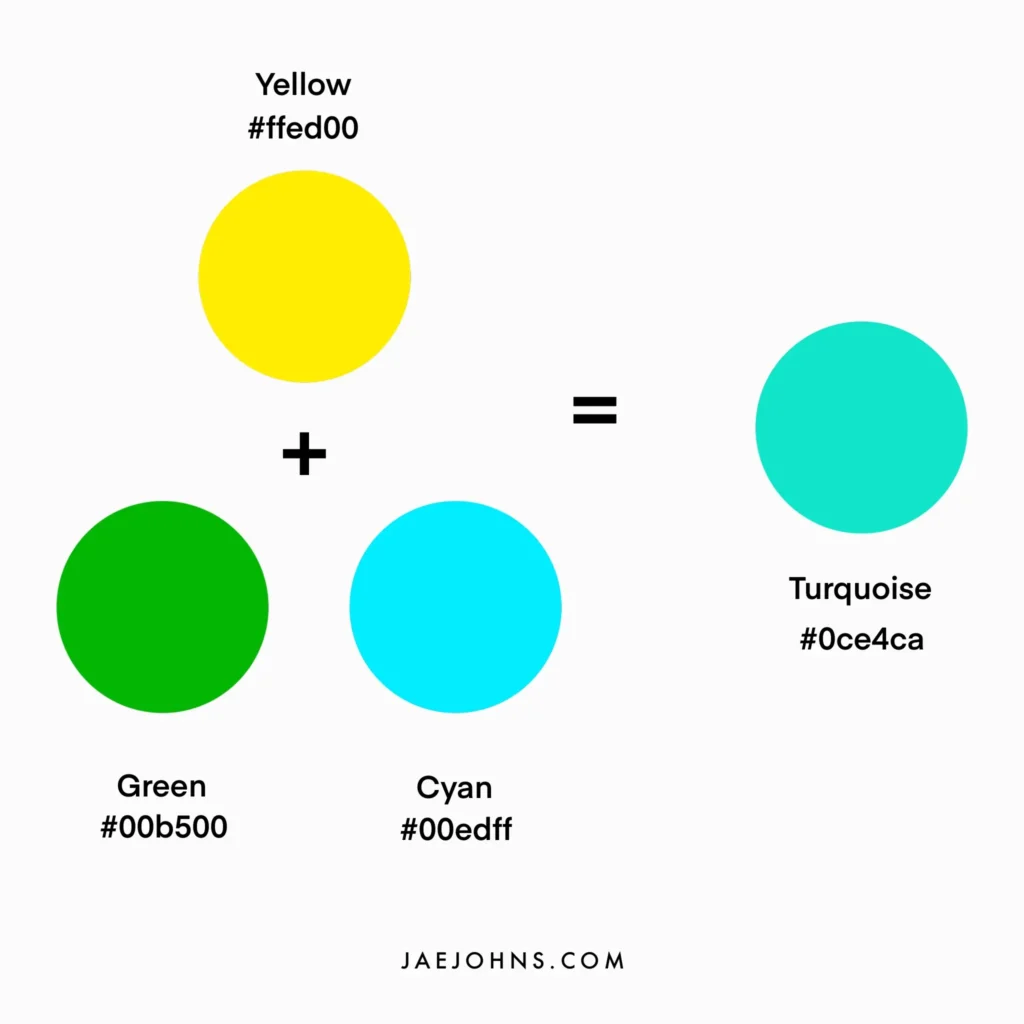
When learning how to mix different shades of blue, creating a muted blue is something you want to avoid at times.
To avoid some of the muting, you can also mix a lighter blue by combining a blue with light green and yellow shades.
These color combinations will make a more turquoise blue, but it will also keep the saturation of blue high.
Adding Cadmium Orange and White
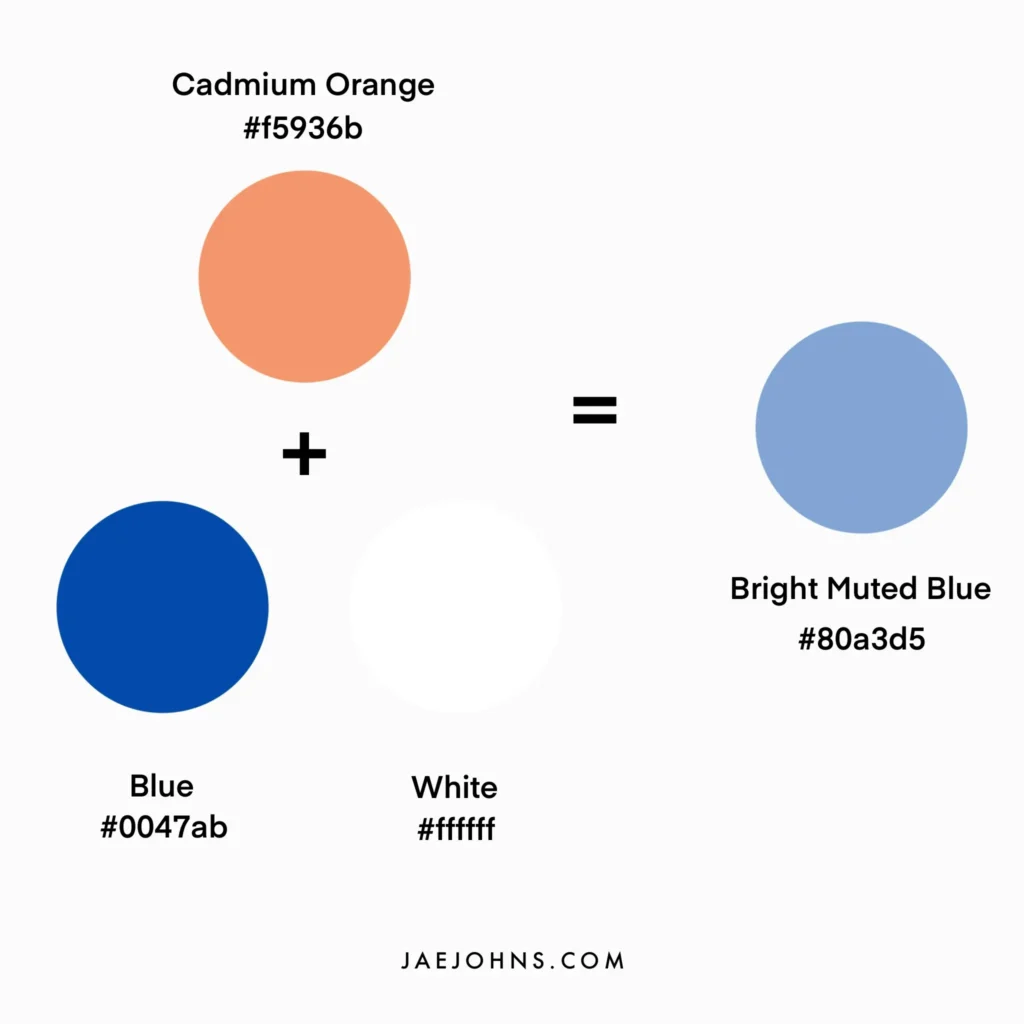
There may be other times when you need to make a muted blue when you’re learning how to mix different shades of blue.
For a more muted bright blue, you can add a bit of cadmium orange.
When you mix blue with Cadmium Orange (which is a mixture of the two other primary colors, red and yellow), you get a more grey tone, muting out the overall blue saturation.
Read Also:
- What Colors Make Brown (How to Mix Brown The Right Way)
- What Colors Make Purple & How to Mix Them Like a Pro
- What Colors Make Green & How to Mix Different Shades
How to Mix Muted Shades of Blue
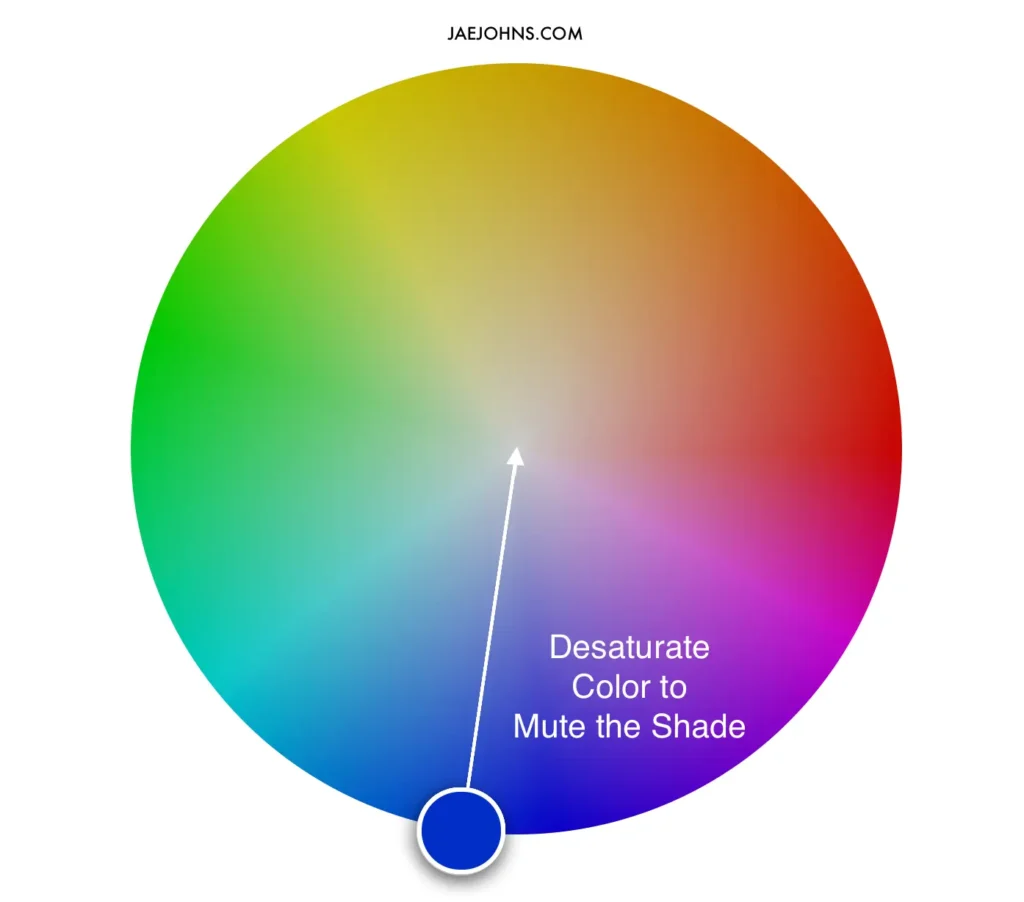
Both Cobalt and Ultramarine Blue are highly saturated, bright colors.
Each is a popular shade in painting, but using them straight from the tube isn’t going to work for most projects.
Thus, you’re likely going to spend a lot of time thinking about how to mute your blues.
Finding a fantastic muting option,
Muting a color refers to desaturating it while remaining the same color.
You might say it looks more ‘grey’ when muted.
Complementary Colors
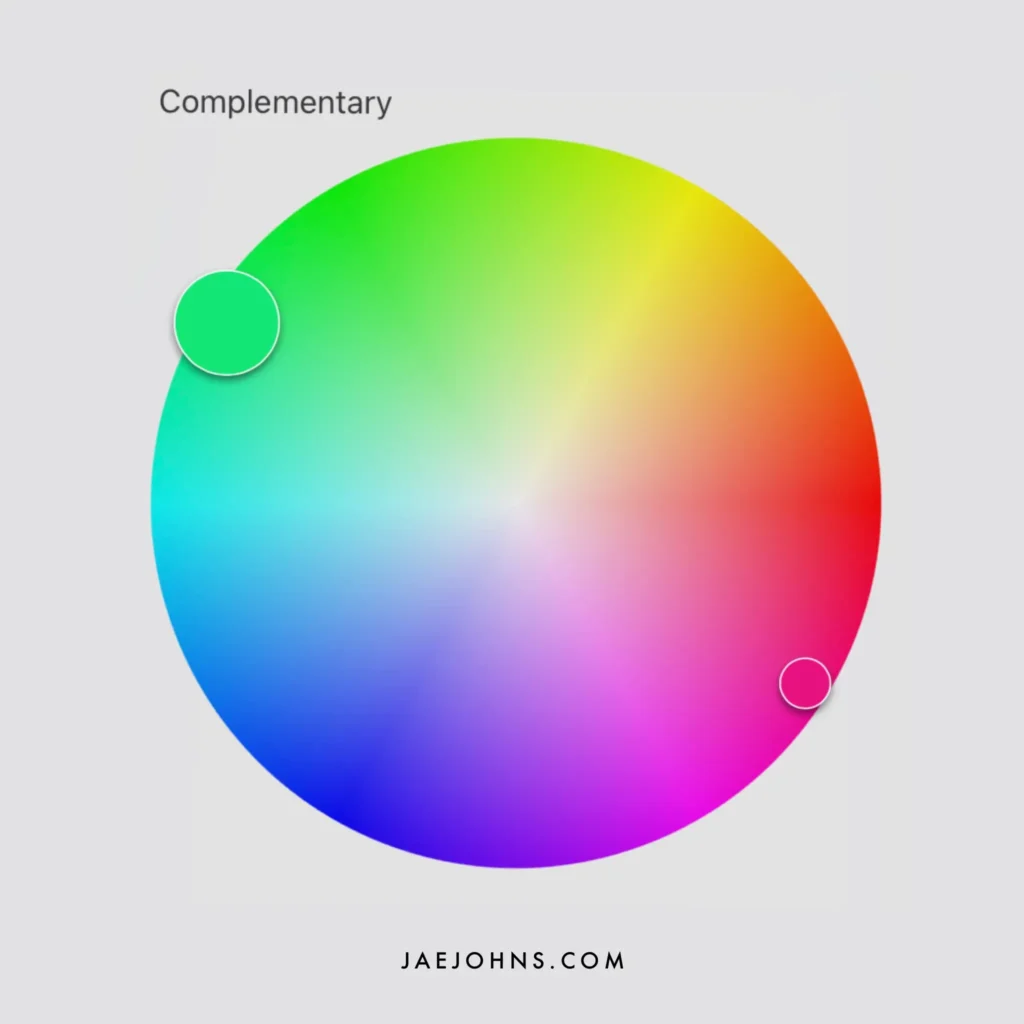
The most important aspect of mixing muted colors is complementary colors.
The more you mix colors that complement each other, the more directly muted it will become.
This is different from mixing all three primary colors on the color wheel, which tend towards a muddy brown color.
Looking at a color wheel, you’ll see that orange complements the color of blue. Interestingly, if you already have a darker blue, a brighter orange or gold will complement it.
On the other hand, if you have a more teal color, then a reddish-orange will be its complement.
Going for the direct complement color to your shade of blue is a fantastic option to create a solid muting effect.
Muted Blues
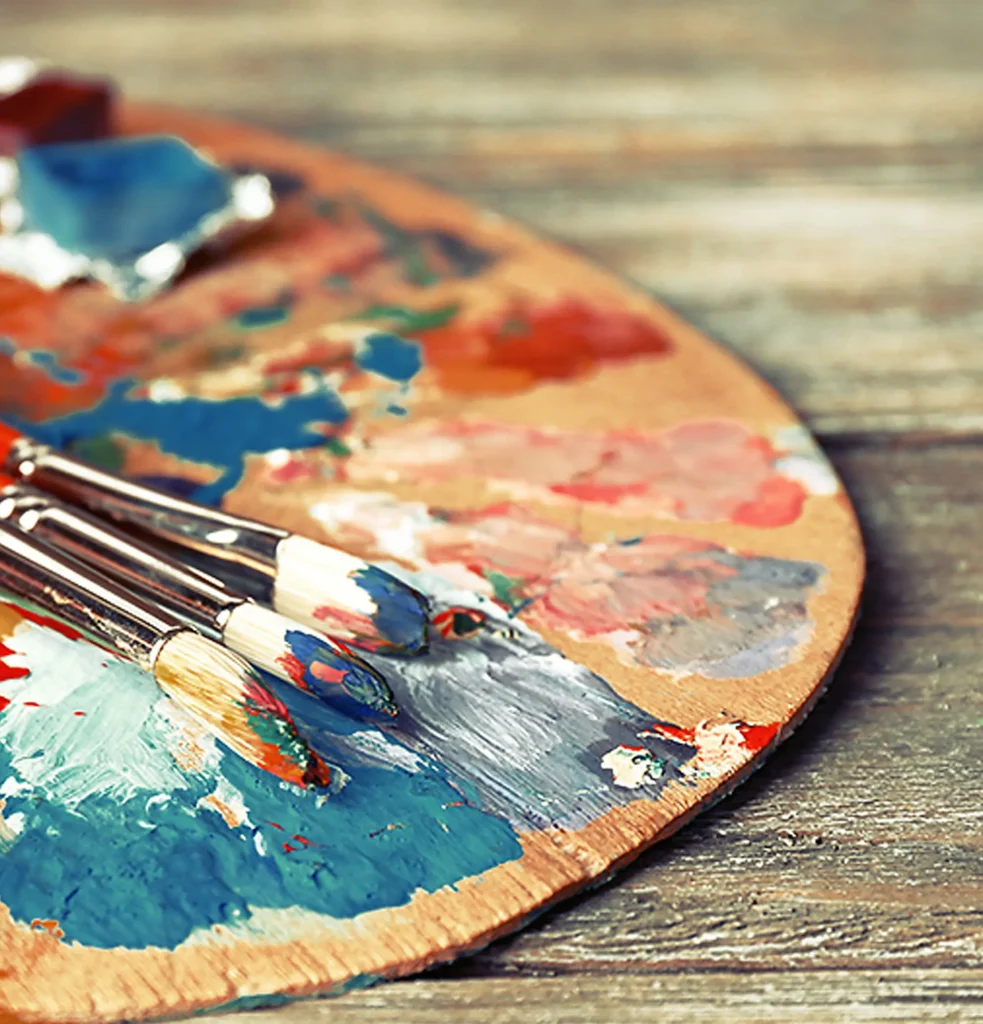
Ultramarine Blue and cadmium orange will make a classically muted and darker blue.
However, because Ultramarine Blue is a bit of a darker color to begin with, you can get a dull blue by muting it.
You can try Cobalt Blue and cadmium orange for a truer blue while still muting it.
If you try to mix too much orange color with either blue, you’ll start to get a green shade.
This is because the yellow paint in the color orange mixes with the blue to become green.
Therefore, you have to limit yourself with these mixing techniques.
Experiment to see what the limits are.
Instead of cadmium orange, you can also try burnt umber.
This is not as effective in directly muting one’s blue, but it will make an earthy brownish blue.
Sometimes this is exactly what you are looking for.
The Temperature of Blues
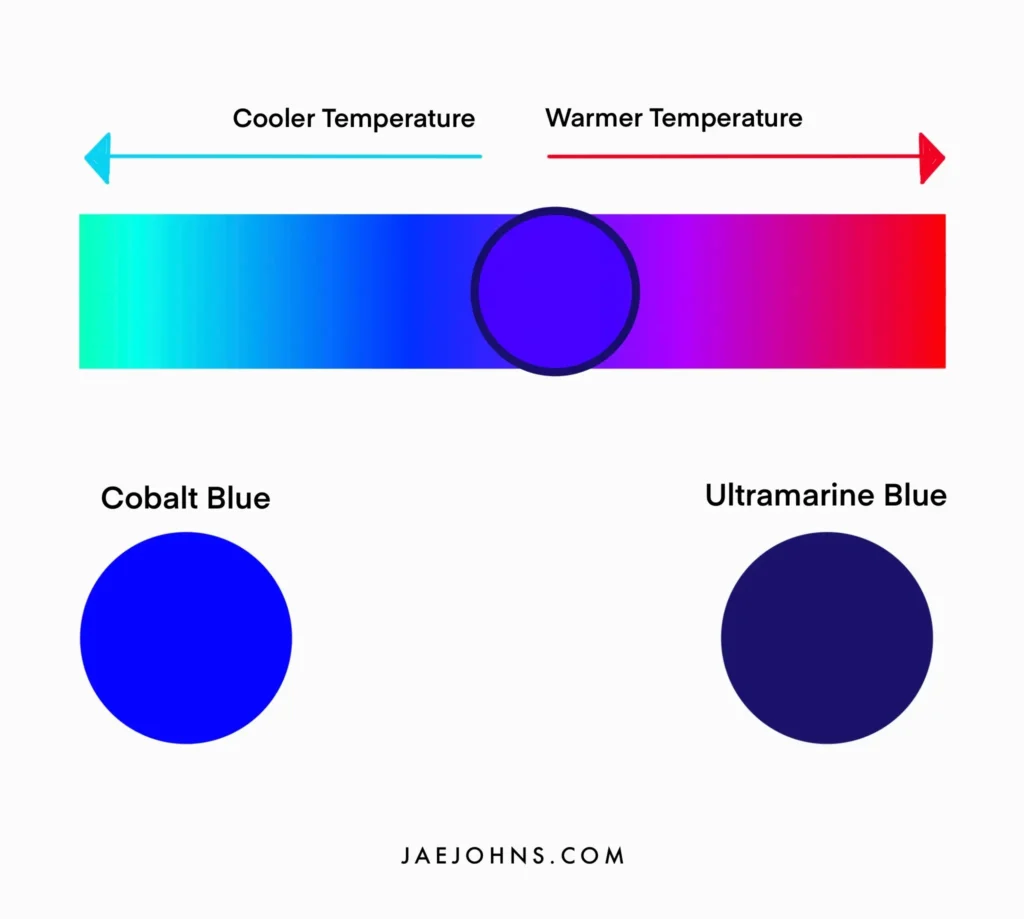
In the most general terms, color temperature most often refers to the amount of red in warm shades of a color and the amount of blue pigment in cool shades.
However, when specifically talking about blue shades, the warm blues lean yellow and greenish.
This is partly why color temperature tends to be a more relative measure.
How to Make Warmer Shades of Blue
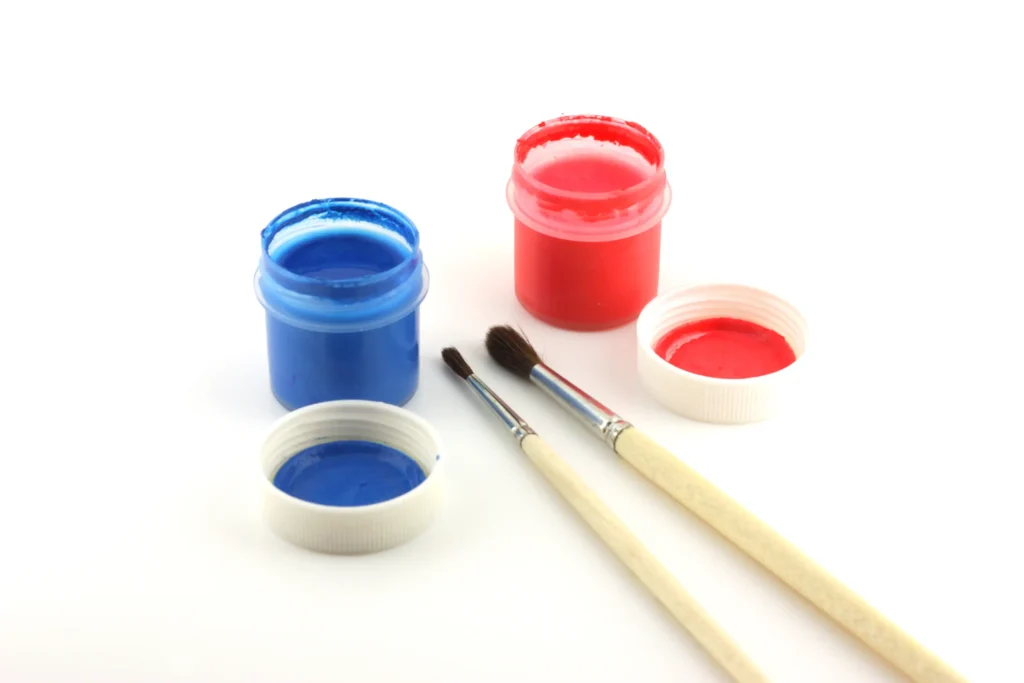
Generally, making a warmer blue paint shade means adding some red.
However, because warmth is a relative term, it will require experimentation with different blues and reds to determine what works to warm it up.
Warming Ultramarine Blue
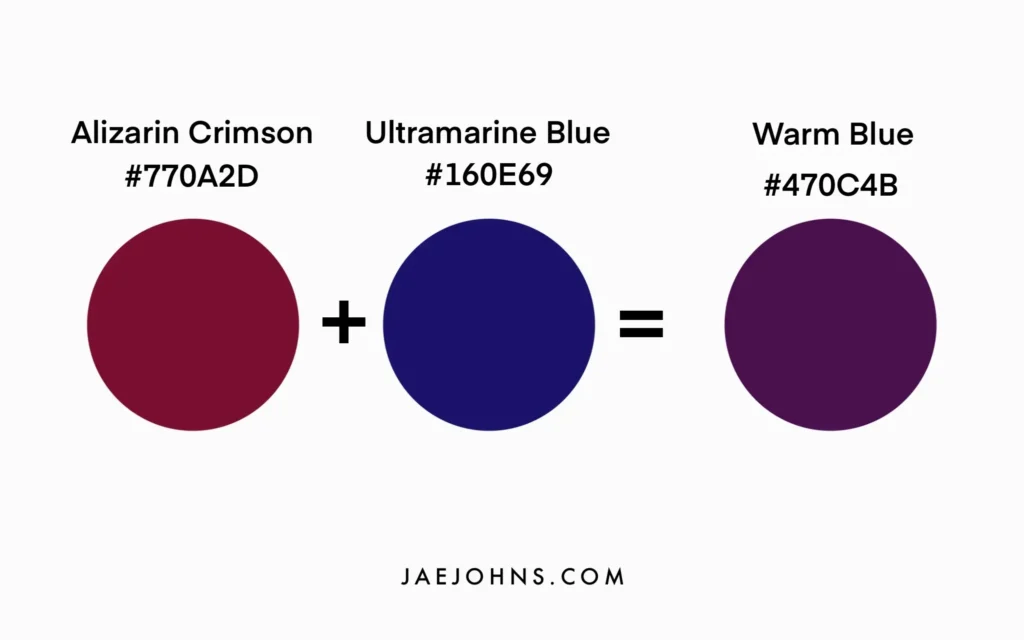
Ultramarine Blue as a blue base color is already one of the warmer blues to begin with. If you place it on the color wheel, you’ll notice it is a bit closer to purple than green.
That’s why it is a perfect base blue for creating a warm blue.
Warming it up further will learn more towards those purple undertones.
First, you can mix Ultramarine Blue with alizarin crimson to warm it up directly.
Since alizarin crimson is a purple-hued red, the color should remain relatively blue overall but become just a little redder.
This is the difference between muting a blue and warming it up.
If you use a more orange or warmer red, you’ll most likely get a muted, brownish blue.
Second, you can also try mixing Ultramarine Blue with Burnt Sienna.
It is another dark red hue but leans closer to the color brown.
This will make the blue turn towards a saturated brownish blue.
Again, it won’t warm up the blue as much but will create a somewhat dark, warm blue.
Finally, as discussed before, you can try mixing it with burnt umber, which creates a warm blue.
Warming Cobalt Blue
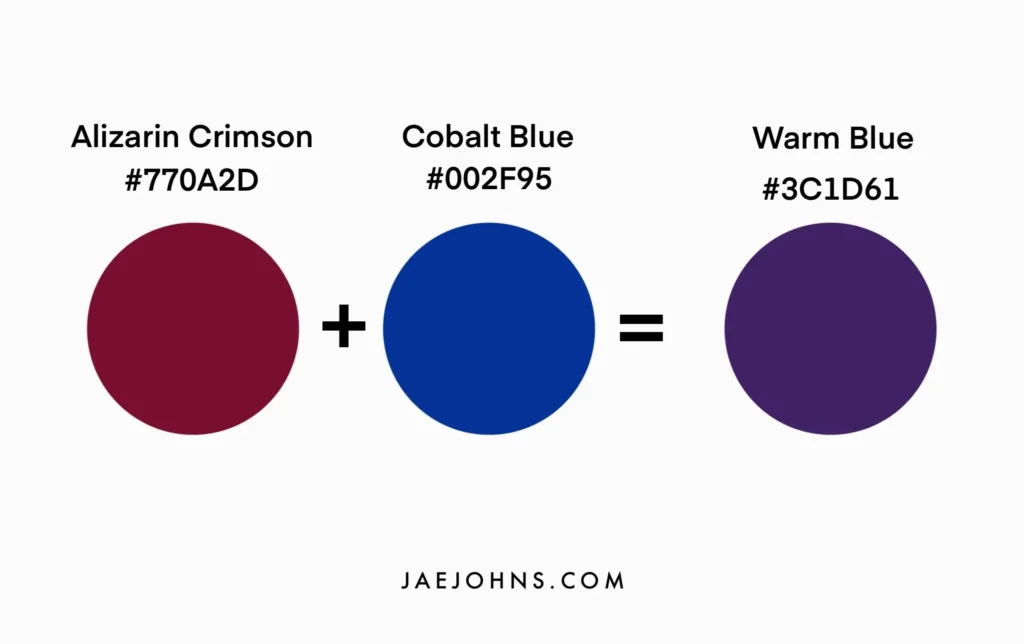
Cobalt Blue is a cooler shade than ultramarine blue.
Generally, it will be harder to transition it into a warmer hue.
But, you can try similar techniques to what we did with the ultramarine blue and see what you come up with.
For a bright, warm blue, mix alizarin crimson with Cobalt Blue.
Since Cobalt Blue begins much more vibrant than ultramarine, the overall effect ends up brighter.
Add just a small amount of alizarin crimson if you just want a subtle warmth.
Trying to mix Cobalt Blue with burnt sienna will give a much darker shade of warm blue.
Generally, this will veer towards purple, so be careful.
Comparing Ultramarine to Cobalt overall, Ultramarine leans towards more bright colors and is more saturated.
How to Make Cooler Shades of Blue
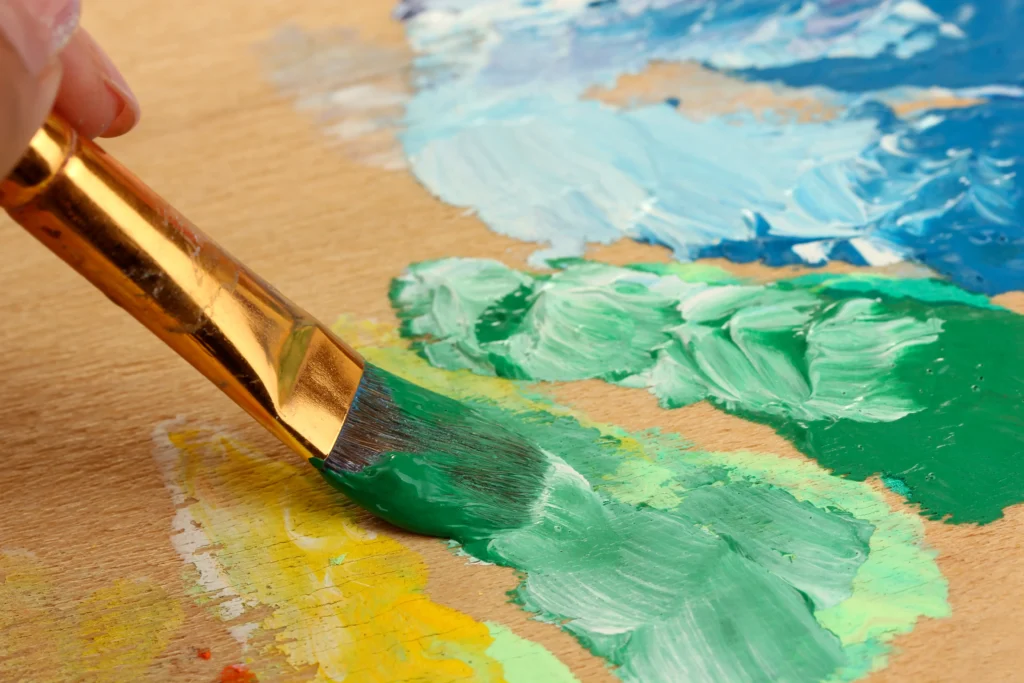
Cooler blues veer towards greens and yellows, making them more of a turquoise and watery color.
So the basic move is to add a bit of green to your blue to achieve a cooler tone.
Each different shade of green will tend towards a different kind of cool blue, depending on whether it’s mixed with Ultramarine or Cobalt Blue.
The two most commonly used for this are Veronese Green and Cadmium Green.
Mixing with Veronese Green
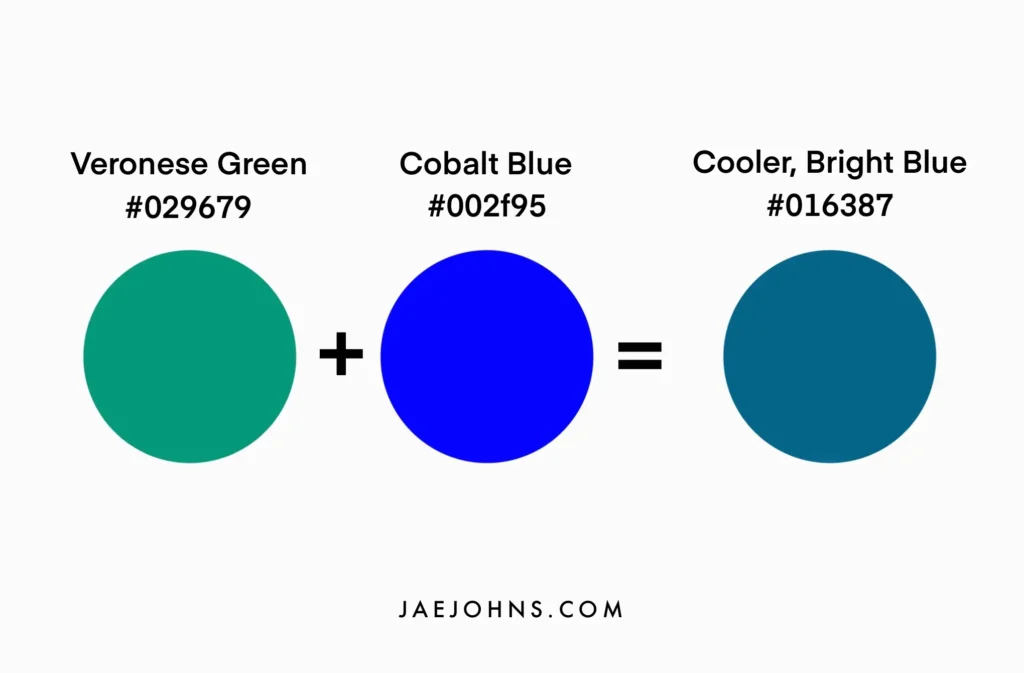
Veronese Green is both a bright and cool green color, a great combination to cool down your blues.
Since it already leans towards a cool blue, it’ll work well for creating cool blue color mixtures.
Cobalt Blue and Veronese Green make for a bright, light, and cool royal blue.
However, the teal-like shade can verge on green easily, so mix the two carefully.
With aquamarine blue, you’ll get a very cool navy blue.
This works for the deep blues of the ocean as well as a stormy sea.
Mixing with Cadmium Green

Mixing blue with Cadmium Green creates a bit warmer blue, with the overall effect being a bit more brown and muted.
When combined with Ultramarine Blue, you’ll get quite a muted blue overall.
This is because Ultramarine Blue is already somewhat purple, so adding green creates a relatively even mix of the primary colors.
Overall, this creates a muted, muddy tone.
Generally, this kind of blue is a helpful color for evoking a gloomy sky and stormy weather.
With Cobalt Blue, you’ll get an overall brighter effect.
Cobalt is cooler than Ultramarine, giving a more strongly cool impression because you don’t get as much of the muddying effect.
The overall blue achieved is a cool, bright blue that works for a summer sky.
Leaning towards Turquoise
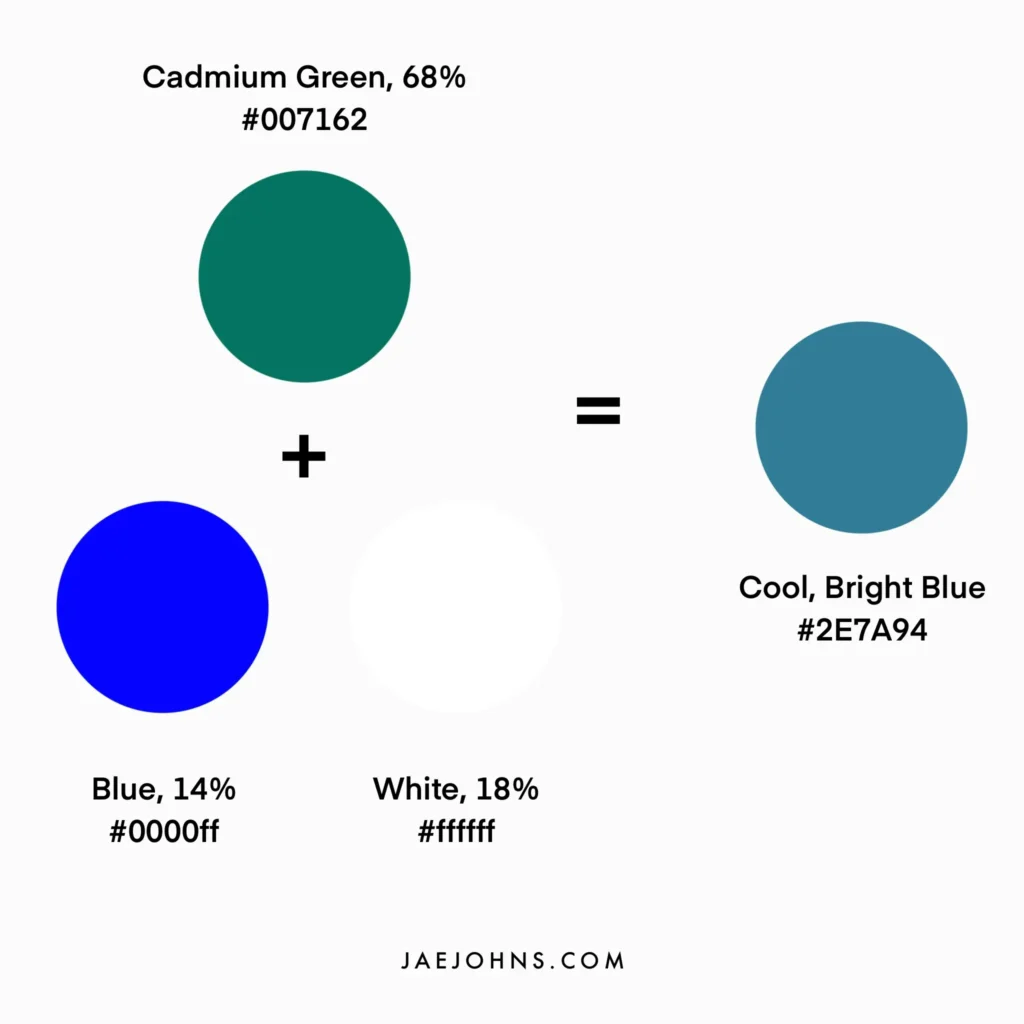
When mixing for cooler blues, you’re going to find that they tend to lean towards the color of turquoise, a greenish-blue color.
If you want that effect, you can add more Cadmium Green and white paint for a generally brighter turquoise color, like a cyan.
The more of the green color paint you add of either kind, the closer to a turquoise you will achieve.
Conclusion
Knowing what colors make blue is crucial for painting.
Blue is tucked into the many hiding places of shadows, the sky, and the oceans.
Night scenes especially tend to have a lot of blue, as moonlight seeps across the entire painting.
Getting the perfect color is possible with the host of options you have available now to experiment with.
It’s just a matter of getting the shading, temperature, and saturation right.

